Incredible images reveal up close the skeleton of a young woman found buried in rural Poland with a sickle on her neck and a giant padlock on her toe.
The remains of the 18-year-old girl, named ‘Zosia’ by archaeologists, were found in a field outside the small town of Pien, south of the city of Torun, in 2022.
It is believed that the locals placed the sickle and padlock to protect them, fearing that the “vampire” girl would rise from the grave.
For generations, villagers have avoided the site and never built on it, while young people are taught to avoid it.
The girl was among 100 skeletons that were found buried and now the find is described in tonight’s two-part Sky History documentary Field of Vampires.
A clip from tonight’s episode shows the skeleton at the burial site and tells how the triangular padlock found on the woman’s toe is “incredibly rare.”
Incredible images reveal the skeleton of a young woman found buried in rural Poland with a sickle on her neck and a giant padlock on her toe. The 18-year-old’s remains were found in a field outside the small village of Pien, south of the city of Torun in 2022. The find is detailed in the Sky History documentary Field of Vampires tonight.
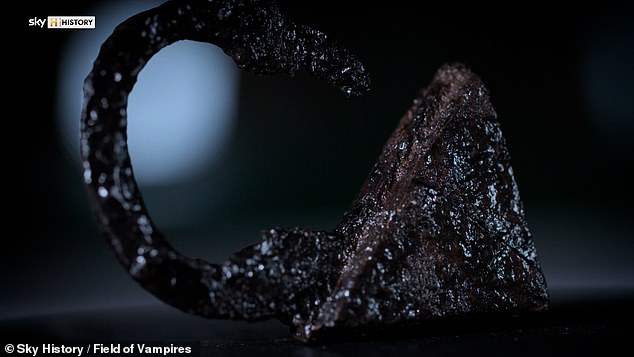
A clip from tonight’s episode tells how the triangular padlock found on the woman’s toe is ‘incredibly weird’
Until now, only one object of this type had been found in Poland. Together with the sickle, the discovery is unique in Poland and possibly in the world.
Bone scans have uncovered an abnormality in Zosia’s sternum, suggesting she may have had a physical deformity that caused her great pain.
It may have been this deformity that made her especially feared as a vampire before she was brutally sacrificed and buried.
Zosia was found by Professor Dariusz Polinski and his companion Magda Zagrodzka.
It was at the end of his excavation at Pien, two years ago, that Professor Polinski’s trowel struck what sounded like metal.
Professor Polinski says on tonight’s programme: ‘The first thing we found was something that sounded like iron or metal.
“After delicately brushing it, it turned out to be convex and we knew it was a sickle.”
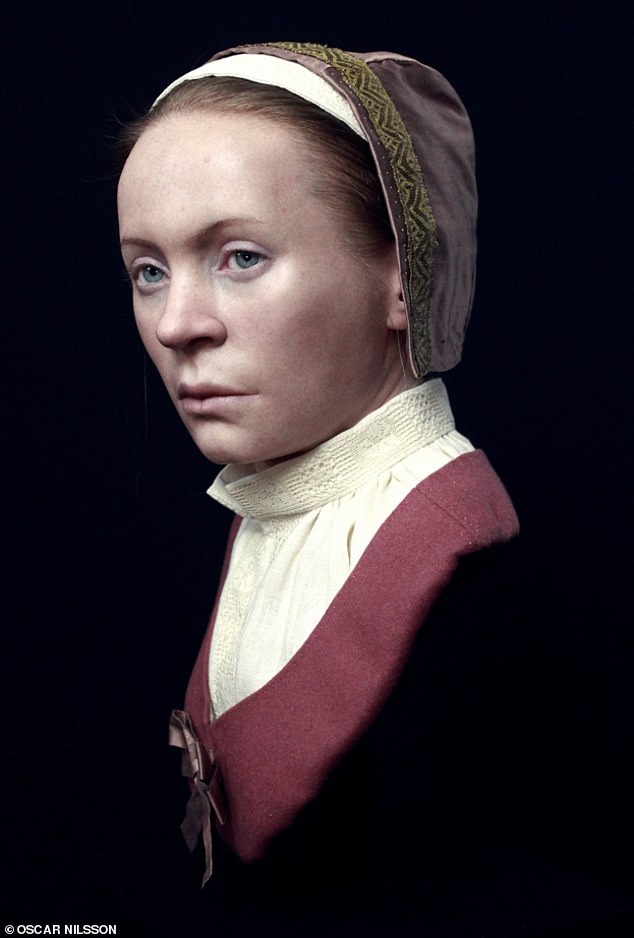
The artist’s impression suggests that he was light-faced, blue-eyed and short-haired, possibly coming from Scandinavia.
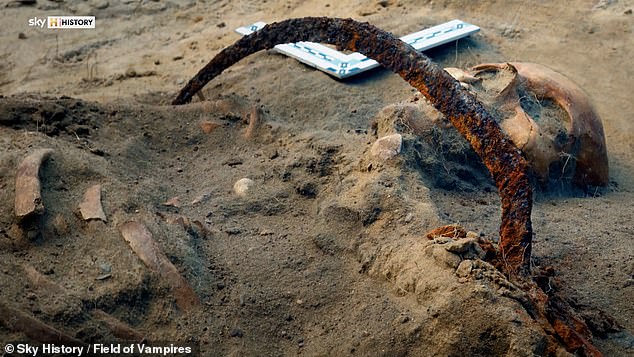
Zosia’s skeleton found with a sickle firmly placed to ensure that she would be decapitated if she rose from the dead.
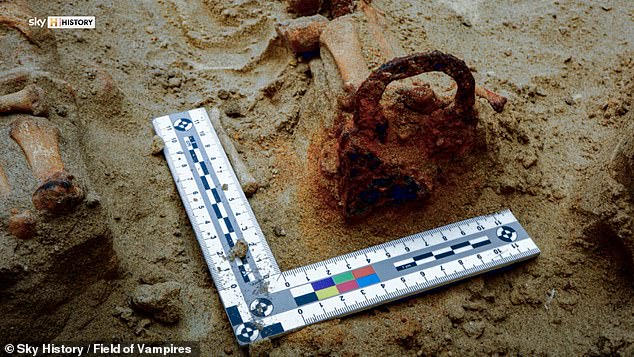
The piece of metal that turned out to be an ‘incredibly rare’ triangular padlock
Historian Dan Jones says: ‘I have to admit that when I first saw the photographs I was very excited. I had never seen anything like this before. Is this a crime scene?
‘Is this evidence of the supernatural? Is this evidence of a unique fashion or are we, in fact, going back to a completely different world in which Europe was governed by completely different rules?’
Zosia is the only skeleton found with a sickle, an agricultural tool with a curved, sharp blade used to cut corn, around her neck.
It was installed to ensure that the dead girl would be decapitated if she came back to life and tried to get up.
Zosia was also found with a silk cap on her head, indicating that she had had a high social status, as well as a protruding tooth.
Because she died around the time of the Swedish-Polish Wars, researchers have speculated that she may have been Swedish and therefore considered a foreigner.
Facial reconstruction expert Oscar Nilsson took a digital scan of his skull and made a copy with a 3D printer.
The Pien site has been nicknamed the “Vampire Field” because around 30 skeletons show signs of having been immobilized.
Among the 100 graves are also a partially exhumed child, a pregnant woman, a woman with advanced syphilis and a man with the corpse of a child at his feet.
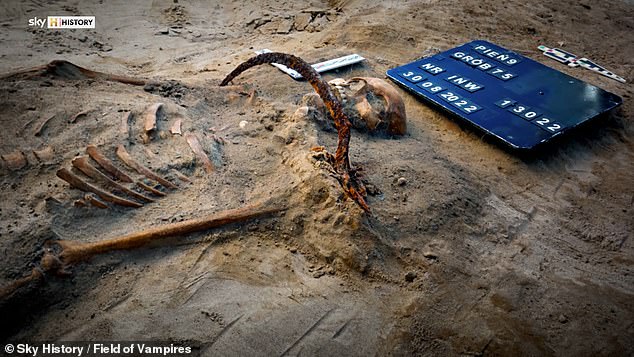
Zosia is the only skeleton found with a sickle, an agricultural tool with a curved, sharp blade used to cut corn, around her neck.
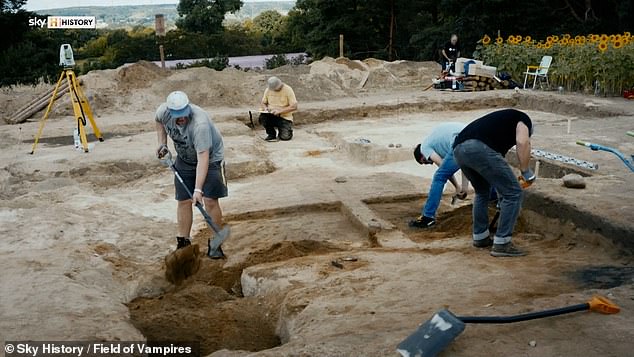
Workers seen on site in a field that has not been built for generations. Young people are warned to stay away
Professor Polinski said this cemetery was specifically for people “excluded from the community.”
However, all the graves were left unmarked and there are not even written records about the bodies at the site, making identification a monumental task.
Some bodies were face down, others were loaded with stones and others had coins in their mouths.
Thanks to classics like Bram Stoker’s Dracula and FW Murnau’s Nosferatu, the legend of the vampire has spread throughout the world today.
Professor Polinski and his partner plan to return to Pien for more excavations, including a nighttime one in which fluorescent lamps will be used to uncover new bones.
Field of Vampires airs on Sky History tonight at 9pm and at the same time on November 5.

